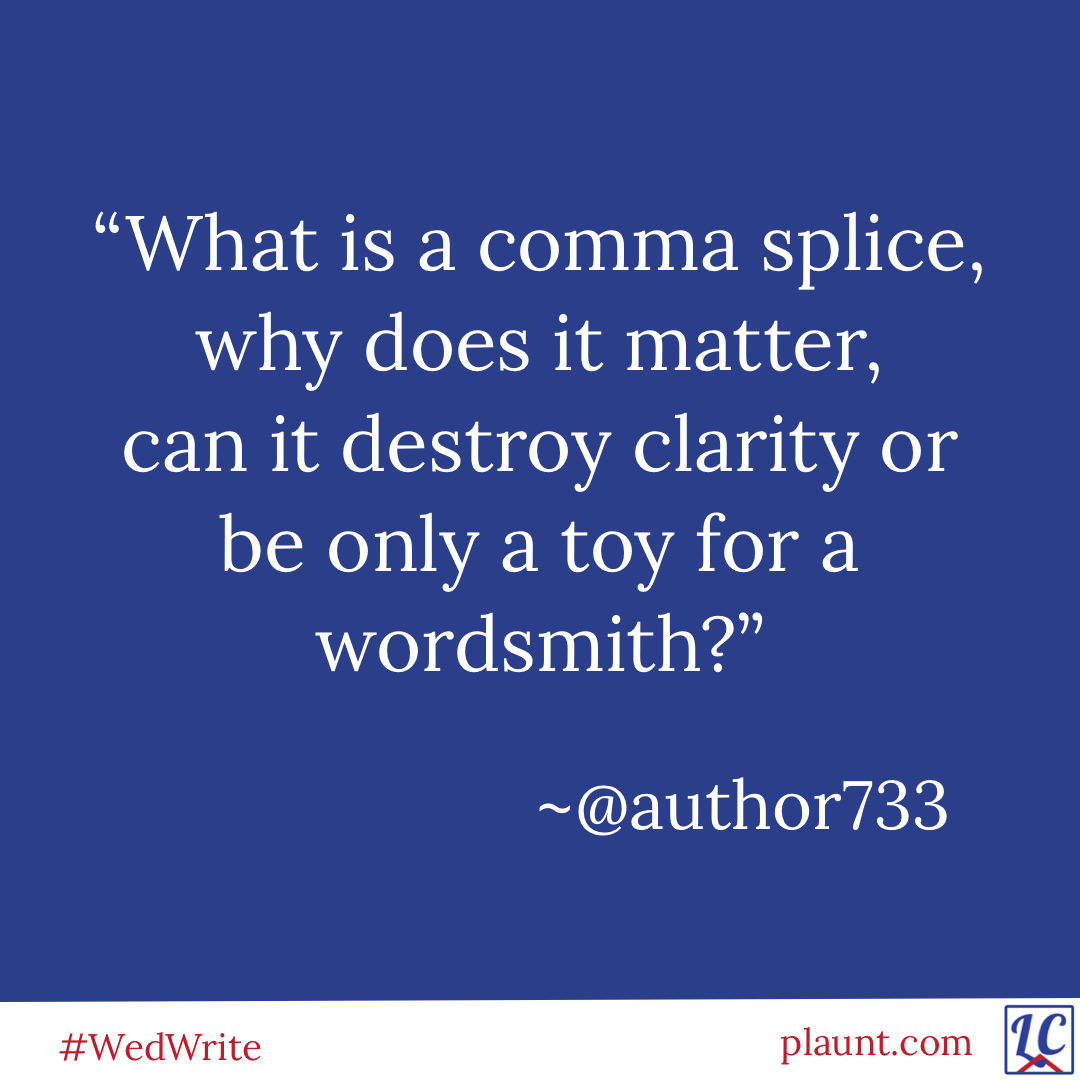One of my followers asked this question:

I’m going to answer these questions in reverse order, and then add a few more of my own.
Is a comma splice only a toy for a wordsmith?
I wouldn’t say “only”. Some wordsmiths like to play outside the boundaries of the rules, so just about any spelling, grammar structure, or punctuation can be a toy for a wordsmith. But there are a lot of writers who use comma splices simply because they don’t know any better.
Can a comma splice destroy clarity?
Perhaps. The purpose of grammar, spelling, and punctuation is to have the little black squiggles on the page make sense to the person who is reading them. That’s why the rules exist. Disregarding those rules can sometimes lead to a lack of clarity, but not always. If a wordsmith is truly a master, they might be able to make their meaning perfectly clear, even while playing outside the rules.
Why does it matter?
Part of the answer to this question is pretty much the same as the last. It matters because you want your reader to understand the meaning of your words, and that will be easier if you follow the standards. Many instances of wordplay depend on paying attention to the punctuation, because changing the punctuation can change the meaning. That’s okay if that’s what you want—if you’re being the game-playing wordsmith from the first question—but not so good if you’re confusing your readers. I would add that it also matters because some readers are judgemental. Some will completely miss the point of your post if you have a typo, and will feel not only justified but also honour-bound to point it out to you. If you want to keep the attention and respect of your readers, I recommend not using comma splices, or any other incorrect language structure, unless it serves a specific purpose.
What is a comma splice?
A comma splice is a sentence in which there are two (or in the case of your original question, more than two) independent clauses that are joined only by a comma.
Example:
Bill was late, we waited for him.
What is an independent clause?
An independent clause is a clause that can stand alone as a complete sentence. To be a complete sentence, or to qualify as independent, the clause must express a complete thought and have a subject and a predicate (verb).
How do you fix a comma splice?
There are three possibilities.
The simplest way to fix a comma splice is to change the comma to a semicolon. If you are writing longhand, that only requires adding one little dot above the comma. Use a semicolon if the two independent clauses are closely related. Usually they are if they were written as a comma splice to begin with.
Example:
Bill was late; we waited for him.
Another way to fix a comma splice, which is suitable if the two clauses are not closely related, and also if you already have a lot of long sentences in your document, is to make each clause a separate sentence. Put a period (full stop) at the end of the first, and start the second with a capital letter.
Example:
Bill was late. We waited for him.
The third way to fix a comma splice is to add a coordinating conjunction after the comma.
Example:
Bill was late, but we waited for him.
What is a coordinating conjunction?
Coordinating conjunctions are used to join two parallel structures. In the case of two independent clauses, there is a comma before the conjunction. Coordinating conjunctions can be used with phrases and single words as well. Here is an example with the coordinating conjunction “and”: A storm just passed through; there was a lot of wind and rain. Notice that in this example there was no need for a comma before the coordinating conjunction.
What are all the coordinating conjunctions?
Good news—there are only seven to remember. They are: for, and, nor, but, or, yet, so. Some people remember them by the acronym FANBOYS. But you could also remember them as a rhyming beat. Try it.
